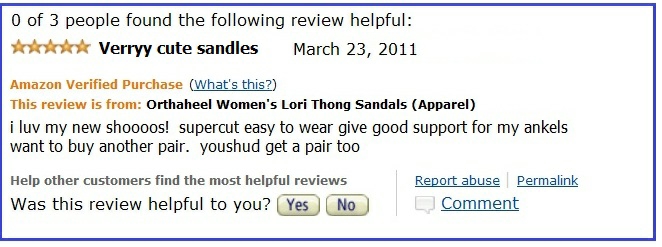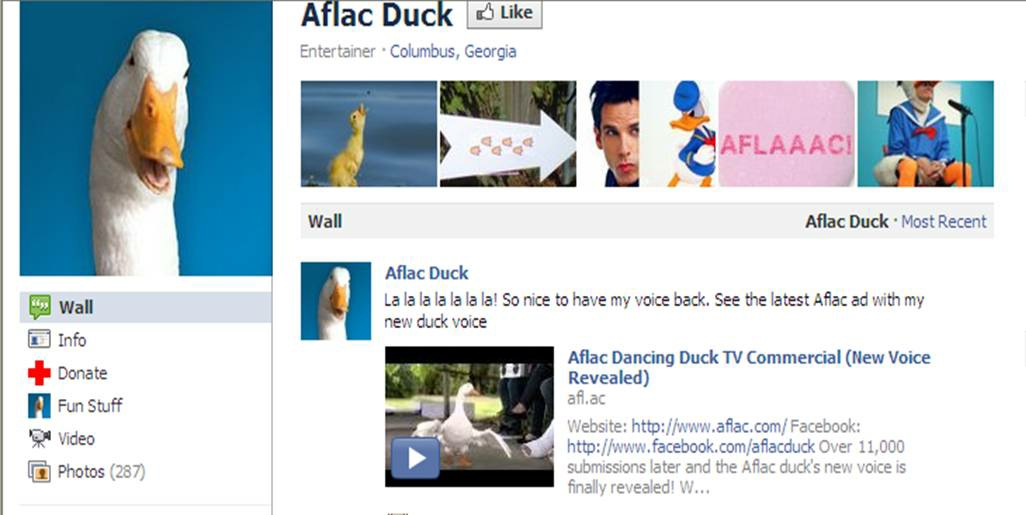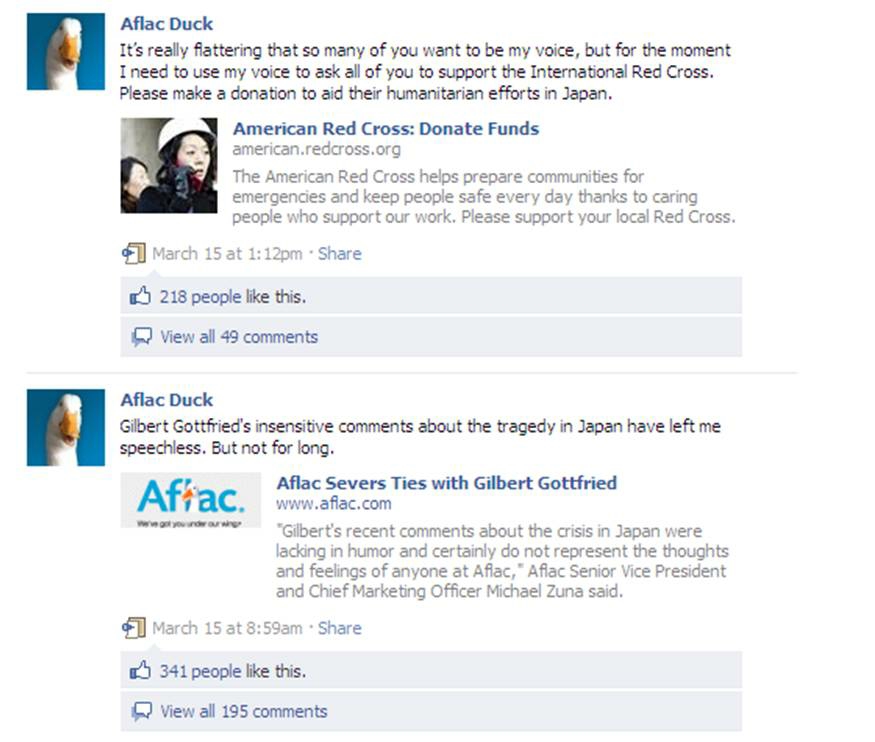Company Examples for Chapter 3: Interpersonal Communication Skills
Uber CEO Responds to Culture Questions (February 2017)
After a female engineer blasted Uber for its failure to address sexual harassment incidents, CEO Travis Kalanick wrote a message to employees. He has a big job in repairing the company's image at this point: a New York Times article called the culture "aggressive" and "unrestrained."
Wells Fargo's Failed Response (October 2106) 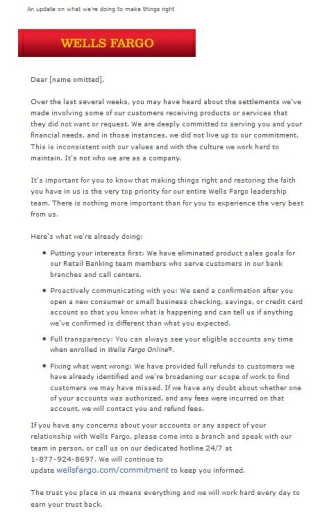
By most counts, Wells Fargo handled the scandal about opening accounts for people without their permission badly. One big problem is how management ignored employee complaints about sales pressure and reports of wrongdoing. This email to customers lacks any real promise of change, and the TV commercial isn't much better.
Listening in Social Media (August 2016) 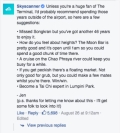
What a great example of humor and listening online: Skyscanner travel app suggested a 47-year itinerary for a customer. He jokingly asked what he could do during the layover. Jen, the customer service rep didn't miss a beat: she's quick and fun, and includes her promise in the P.S. The post vent viral and Skyscanner won big points.
Older Examples
PowerPoint presentation showing the timeline of Kenneth Cole's Twitter gaffe. Adapted from Advertising Age. Useful to demonstrate listening through social media.
Transcript of a phone call between Wisconsin Governor and someone he believes is a donor. Read more about the prank call here.
Company Examples for Chapter 1: Understanding Business Communication
Princess Cruises Apologizes (December 2016)
Princess Cruises, owned by Carnival, published several messages to apologize for illegally dumping oil-contaminated waste into the ocean. The company's communications certainly are prolific, but how honestly do they admit wrongdoing, and how well do they rebuild the brand?
A comment posted on YouTube under the president's video sums up one perspective: "[T]his video needs taking down and a new one with someone who looks sorry is put up. [H]er reading of this is terrible, like watching a 12yr old at a school play." (The writer needs to take one of our courses! But students might agree with his assessment.)
These examples can be used to discuss persuasive strategies (Chapter 7), oral presentations (Chapter 11), and ethics (Chapter 1):
Marriott CEO Writes an Open Letter to President-Elect Donald Trump (November 2019)
Arne Sorenson's letter to President-elect Trump illustrates principles of persuasion (Chapter 7) and can be used to discuss medium choice (Chapter 1). How does the letter reflect Marriott's business interests? Why did Sorenson choose LinkedIn?
OLDER EXAMPLES
Collection of companies' social media policies.
Apple's (leaked) social media policy.
Great email exchange by two lawyers (discussed in Chapter 1). Useful to discuss ethics, tone, and more. Here's a PowerPoint file to reveal the messages, and you can read more about the situation here.
Excerpts of Goldman Sachs emails (topic in Chapter 1) collected by the Wall Street Journal. As the WSJ reporter says, "The [Senate] committee will likely use many of the emails to illustrate Goldman's sometimes contradictory and unflattering statements about its role in the mortgage meltdown." Read more here.
National Labor Relations Board's memo about social media policies, 2012.
General Mills statement reverting back to its original legal terms.
A general's emailabout the value of reading. Read more about the situation.
Ellen Pao's controversial resignation from Reddit, 2015.
Facebook communications: Communicating Our Community Standards and Guidelines, 2015.
Former Twitter CEO Dick Costolo's posts taking responsibility for cyberbullying on the site, 2015.
Company Examples to Use in Your Classes
These examples demonstrate how companies use-or fail to use-business communication principles. More examples are included in news stories posted each week and will be added by chapter when discovered. Looking for videos only?
Chapter 1: Understanding BComm (Ethics Legal and Technology)
Chapter 2: Intercultural and Team Communication
Chapter 3: Interpersonal Communication Skills
Chapters 4 and 5: Writing Process and Style
Chapter 6: Neutral and Positive Messages
Chapter 7: Persuasive Messages
Chapters 9 and 10: Data Visuals and Reports
Chapter 12: Employment Communication
USDA Replaces Food Pyramid Graphic
The U.S. Department of Agriculture is trying a new graphic to help people understand healthy food choices. The pyramid graphic was thought to be confusing (well, yes, we see a person climbing a mountain with a pile of food at the bottom). The USDA's revised graphic is much simpler, showing just a plate with words to represent portions of food. To accompany the new communication, the USDA has a new website.
- In what ways is the new graphic more effective than the old? How do you think people will react to the image?
- Read the USDA's summary of messages about nutrition. How effective do you find this summary for combating obesity? What ideas do you have for improving these messages?
Videos for Chapter 12: Employment Communication
Humorous videos for discussing responses to the interview question, "Tell me about yourself." Bad, ugly, and good.
Interviews with Rocco DiSpirito for a restaurant on former reality TV show The Restaurant. Illustrates overuse of "I'm a people person."
Video resume example.
Amusing "How You Really Sound" examples from job interviews, 2015.
Videos for Chapter 11: Oral Presentations
Ted Talks are great examples of engaging delivery styles and more. This spreadsheet ranks "engagement data" for Ted Talks and includes links to videos.
Presentation by Apple CEO Steve Jobs. Useful to demonstrate a conversational style with minimal visuals.
Queen Latifah on 30 Rock. Funny illustration of delivery skills without content from the TV show 30 Rock.
Borat's failed "not joke."
Celebrity news clips are useful to demonstrate exaggerated voice inflection: Access Hollywood and Showbiz Tonight.
Jim Cramer has his own brand of delivery. Useful for demonstrating emphasis, pauses, and variation in tone and speed.
Oprah Winfrey's tribute to Rosa Parks. Useful to discuss a natural delivery style when reading from a script. Also useful to demonstrate pace, pauses, humor, rhetorical devices, and more.
Dutchess Kate Middleton's first speech, 2012.
Apple CEO at the Worldwide Developers Conference, 2012.
Jamie Dimon, CEO, JPMorgan Chase, testifies about trading losses, 2012.
New York Mayor Bloomberg's news conference after Hurricane Sandy, 2012.
Miss Utah struggles with a question at the Miss USA Pageant, 2013.
Twitter CEO at University of Michigan commencement, 2013.
President Obama at White House Correspondents' Dinner, 2013.
Jodie Foster's emotional speech at the Golden Globes Awards, 2013.
Senator Marco Rubio's odd reach for water during the State of the Union Address response, 2013.
More than 300 commencement speeches.
NBA's Adam Smith NBA's Adam Smith responding to questions about Don Sterling LA Clippers controversy, 2014.
GM CEO Mary Barra addresses employees and answers tough questions about the company's failure to recall defective cars.
CVS CEO announces that stores will stop selling cigarette products.
Employee advocacy group criticizes McDonald's low pay, and an employee questions the USA president at a dinner event.
NFL Commissioner's discussion of the Ray Rice situation, 2014.
NY Governor Cuomo addresses prison break in a news conference, 2015.
President Obama's news conference about the Charleston, SC, shootings, 2015.
Popular commencement speeches, 2015.
President Obama at the White House Correspondents' Dinner, 2015.
Following Clinton's announcement, Marco Rubio announces his run for president, 2015.
In a non-traditional commercial, Hillary Clinton announces her run for president, 2015.
Ranked Oscar speeches, 2015.
Videos by Chapter
On these pages, you'll find several videos suggested for each chapter. Many of these are related to concepts or stories discussed in the book. Of course, additional videos are included in news stories posted each week.
I welcome suggestions for new videos and would appreciate knowing about any broken links. If you find these useful, I would like to hear how you're using them in your class. You may email me at anewman[at]bizcominthenews.com.
Chapter 1: Understanding Business Communication
Chapter 2: Intercultural and Team Communication
Chapter 3: Interpersonal Communication Skills
Chapter 4: The Writing Process
Chapter 5: Improving Your Writing Style
Chapter 6: Neutral and Positive Messages
Chapter 7: Persuasive Messages
Chapter 9: Planning the Report and Managing Data
Chapter 10: Writing the Report
Videos for Chapter 9: Planning the Report and Managing Data
Fabulous Ted Talk by David McCandless on different ways of visualizing data.
Comparing cup sizes in the movie Super Size Me (download). Useful for discussing data analysis and creating charts (Scene 7, 19:48 – 21:12).
Video demonstration of Gapminder World by Hans Rosling. Useful to show interactive displays of data. Here is Rosling's Ted Talk.
Videos for Chapter 7: Persuasive Messages
Giovanni Ribisi (Seth) in the movie Boiler Room sells stock to an unsuspecting buyer. Useful to show examples of logos, pathos, and ethos. Download the handout and possible answers.
Taco Bell CEO responds to criticism of the company's taco meat. Useful to discuss persuasion to restore image. Read more here. Here are two ads that accompanied the campaign.
Domino's president responds to the YouTube video posted by two employees. Useful to discuss persuasion to restore image. Watch an overview of the story and employee video.
AOL doesn't allow a customer to cancel his account. Here is AOL's apology/response. What is interesting about the story is that it isn't the first time AOL was cited for failing to cancel accounts on request.
British Petrolum's commercial after the oil spill, rated by the public. Useful to show the public's reaction to the ad. Read more here.
FedEx senior VP apologizes for the viral video of a PC monitor tossed over a fence.
Royal Caribbean reassures customers after the Costa Concordia accident.
Apple CEO Tim Cook responds to tax criticism.
Carnival Cruise CEO holds a news conference to explain the Triumph ship situation.
The NRA's press conference after the Newtown, CT, school shooting, 2013. Read more here.
GM CEO Mary Barra answers tough questions about product safety, 2014.
GM CEO Mary Barra's video message to employees, 2014.
McDonald's "Our Food, Your Questions" campaign, 2014.
Procter & Gamble's "Like a Girl" video, 2014.
Bill Cosby's discussion with AP about sexual assault allegations, 2014.
Dr. Oz's video response to criticism about his TV show and product promotion.
UK Cancer Research shows clever commercial about failing to detect cancer lumps, 2015.
Ober's false-cause fallacy, 2015.
Conan O'Brien pokes fun at Taco Bell (paid commercial), 2015.
JetBlue's video about plane etiquette, 2015.
Videos for Chapter 1: Understanding Business Communication
Mylan CEO defends 400% drug price hike.
Princess Cruises CEO apologizes for illegal dumping.
Stanford University study about multitasking. Useful to discuss noise and distractions that interfere with communication.
Scene from the movie Up in the Air where Natalie Keener and Ryan Bingham debate using videoconferencing to communicate layoffs: 20:07 – 25:48. (I can send the clip by email; it's too large to post here.)
"Flair" scene (13) from the movie Office Space (download). Useful to discuss barriers to communication. Referenced in Exercise 5.
Aggressive customer service at Aggresshop.
Video from the Deloitte Film Festival (example of using social media internally).
Kevin Smith discusses the "too fat to fly" incident on Southwest Airlines (example of using social networking to connect with customers).
Analyst from Southwest Airlines discusses the company's social media strategy.
Brian Williams interview with Matt Lauer about his questionable NBC reporting, 2105.
Sepp Blatter resigns from FIFA after corruption scandal, 2015.
Hillary Clinton discusses the controversy over her personal emails, 2015.
Videos for Chapter 8: Bad-News Messages
Opening scene from the movie Up in the Air (download). Useful to demonstrate the challenges of communicating bad news (layoffs). Beware of obscene language.
Another scene from Up in the Air: Ryan Bingham discusses his philosophy of communicating layoffs (download).
Geico commercial demonstrating a deceptive buffer.
Videos from the "United Breaks Guitars" incident, United Airlines' refusal to pay for a broken guitar and the disgruntled passenger's response:
- Overview of an HBS case
- Dave Carroll's first song
- Dave Carroll's second song
- Dave Carroll's statement
- Dave Carroll's website
News conference about Ebola in NYC, 2014.
Virgin Galactic news conference about the SpaceShip Two crash, 2014.
A French investigator discusses the Germanwings flight crash in a news conference, 2015.
AirAsia CEO apologizes to families of lost flight, 2015.
Blue Bell Creameries CEO announces layoff decision after recall, 2015.
Videos for Chapter 2: Intercultural and Team Communication
Uber CEO Travis Kalanick's altercation with a driver, 2017.
Pepsi's Commercial starring Kendall Jenner, 2017.
Hockey player Ryan Getzlaf apologizes for muttering a offensive remark, 2017
Toyota recalls:
- President Akio Toyoda in front of Congress, February 24, 2010.
- PBS News Hour discussion about Toyoda's apology (analysis of cultural differences).
President Obama's gaffe about the Special Olympics on The Tonight Show with Jay Leno. Read more about the situation here.
Scene from the movie Up in the Air about stereotyping.
Simple explanation of a wiki.
Overview and tutorial of the wiki Wiggio (wiggio.com).
Seven hotel CEOs talk about the importance of diversity.
Chef and TV personality Paula Deen's apology video. Read more about the situation here.
NBA Don Sterling's interview with Anderson Cooper about racial slurs, 2014.
Jonah Hill's apology for a homophobic slur, 2014.
Ferguson, MO, police chief apologizes to the family of Michael Brown, 2014.
Google video about unconscious bias, 2014.
Rachel Dolezal, president of Spokane, WA, NAACP chapter, talks about her racial identity, 2015.
ABA Responds to Critics of High Calorie Sports Drinks
A new study found negative effects of high calorie sports drinks on children. Study authors say that children don't need the calories, caffeine, and other stimulants. This shouldn't come as a big surprise but has warranted this response from the American Beverage Association.
This isn't the first time that a study has put the American Beverage Association on the defense. A study on diet soda was highly criticized by the ABA on Good Morning America:
Source: Putting Health Before Headlines from American Beverage Association on Vimeo.
Discussion Starters:
- Considering the recent study about high calorie sports drinks, in what ways does the ABA's response meet criteria for persuasive communication? In what ways was their response effective and ineffective?
- Looking at the video above, how do you assess the ABA's approach about the diet soda controversy? Do you buy their argument and criticism of the study?
Assignment Idea:
- On the ABA's website, you'll find several articles defending beverage makers and explaining new initiatives that support health, for example, their "Clear on Calories" section. What parts of the ABA's messages do you find most convincing? Least?
Obama Writes 2008 Instead of 2011: Could It Happen to Any of Us?
In a guestbook at the Westminster Abbey in London, President Obama wrote a lovely sentiment -- and then signed the date: 24 May 2008. The format (day, then month) is standard in Europe, but the date is three years off. Perhaps the President was thinking about more wistful times?
Discussion Starter:
- To what extent should this error reflect on the President? A post on New York Magazine's website reads, "President Obama Has No Idea What Year It Is." What do you think of the criticism?
Apple and Foxconn Respond to Explosion at Foxconn Plant
More bad news today at Foxconn, the Taiwanese manufacturer of electrical components and maker of Apple's iPod, iPhone, and iPad. An explosion at an assembly plant in China caused the death of two employees and left 16 more injured.
Apple was quick to offer condolences: "We are deeply saddened by the tragedy at Foxconn's plant in Chengdu, and our hearts go out to the victims and their families."
Foxconn also offered this statement to All Things Digital:
"We can confirm that at approximately 7 pm on May 20, there was an explosion at our Chengdu campus. At this point, we can also confirm that there were two fatalities with injuries to 16 other employees. We are working with medical officials to provide treatment to the injured employees and we are working with government and law enforcement officials to contact the families of all employees affected by this tragedy.
"The situation has been brought under control by the fire department and the cause of this explosion is being investigated by local police officials. Foxconn is cooperating fully with that investigation. Production has been suspended at the site of the explosion until the completion of the investigation. The safety of our employees is our highest priority and we will do whatever is required to determine and address the cause of this tragic accident."
Foxconn was in the news in late 2010 when employee suicides called the company's labor practices into question. In June 2010, Apple's Steve Jobs defended working conditions, saying, "Foxconn is not a sweatshop." With this latest incident, Foxconn and Apple have had more than their share of communication challenges.
Fixing Typos in Online Reviews May Improve Sales
The Story
New research shows that well-written online reviews -- even if they are negative -- may increase sales. At first, this may seem counter-intuitive. But the research proves an interesting point for business communicators: posts that are grammatically correct have more credibility. The discovery also has raised an ethical issue: should companies change online reviews, even if they edit them only for accuracy without changing the content of the review? By one estimate, Zappos, for example, has spent hundreds of thousands of dollars looking at 5 million reviews and has seen possibly millions in revenue increases as a result. Read more.
- How are you influenced by online reviews? Do you find well-written reviews more credible? Why or why not? Although the above (fabricated) example is poorly written, the customer rated the product with five stars. Would you find it helpful?
- Do you consider Zappos' corrections ethical? Use the ethical decision-making guidelines in Chapter 1 as your guide.
Assignment Ideas
- For quick editing practice, correct the above (fabricated) review. Perfect it so that, according to the research, more people will find it helpful.
- Do a few searches online for reviews of products you may consider buying. Which reviews do you find most helpful? Does the quality of the writing affect your perspective?
Beware of Document Leaks
The Story
The Wall Street Journal has created a website, SafeHouse, to solicit documents and databases. Billed as a way for the public to help the WSJ "uncover fraud, abuse, and other wrongdoing," the publisher is taking a WikiLeaks-like strategy to attract whistleblowers. Leaked documents make good news stories -- and create big headaches for corporate communicators.
Source: Disclose.tv - Wall Street Journal Opens A Wikileaks Type Site Video
Discussion Starters
- What do you see as the potential impact of SafeHouse (and other newspapers getting into the game) on corporations?
- How would you advise managers to avoid sensitive communications from getting leaked?
- If you uncovered wrongdoing at work, what avenues would you take to report the issue? What resources may be available within your company? What are the advantages and disadvantages of using these internal channels first?
Assignment Ideas
- Go to the SafeHouse website. How easy is it to upload information?
- On the new website, how are users assured anonymity? Explore the website to see the extent to which whistleblowers are protected.
- Imagine that you were the chief legal officer of a major company. Write an email to all employees to reinforce your communications policy. Using guidelines in Chapter 1 of the text, how can you remind people to protect their email and other communications?
Low-Salt Diet Study Stirs Up Debate
The Story
Contradicting previous research, a new study found that consuming less salt increased the likelihood that people die of heart disease. The study drew criticism from the Centers for Disease Control and Prevention, with one official saying, "At the moment, this study should be taken with a grain of salt." Ha.
Discussion Starters
- According to critics, the study was flawed, partly because of the small sample size and relatively young subjects, who, at an average age of 40, "did not have high blood pressure or cardiovascular disease." In what ways do you see these issues affecting study results?
- If you were a doctor, would you change your previous advice to patients and now encourage them to stop their low-salt diet? Why or why not? If not, what else would convince you that people should change their diet?
Assignment Ideas
- Working independently, find the study, published in the Journal of the American Medical Association on May 4, 2011, through your school library. In class, be prepared to discuss your search process: what tools did you use to find the article? As a group, discuss the search approaches that proved to be most successful.
- Read the full study. Identify what, if any, caveats the authors provide to temper their conclusions.
- Write a letter to the authors of the study to describe criteria for identifying subjects for primary research. What recommendations do you have for their future research?
Aflac Duck Returns
The Story
Aflac Insurance has a new voice of the duck. After firing Gilbert Gottfried for inappropriate tweets about the Japanese earthquake and tsunami, Aflac recruited a new voice. During the situation with Gottfried, Aflac made good use of the duck's Facebook page: apology, recruitment, and annoucement. The company made a splash with a new commercial. Watch below for the Dancing Duck with "new voice revealed."
Discussion Starters
- How do you assess the company's Facebook communication during Gottfried's termination and the new voice? What are the strengths of this approach, and what, if any, are the weaknesses?
Assignment Ideas
- In small groups, discuss Aflac's handling of the incident with Gilbert Gottfried and the recovery through Facebook. In what ways was FB an appropriate medium for the company's message?
- Consider the differences between the duck's FB page and Aflac's corporate FB page. Which is more effective and why?
Local Chamber of Commerce CEO Hides to Avoid Questions
The Story
Taking a page from former Alberta Health Services CEO's approach to media interviews, Dick Fleming avoided a reporter's questions by hiding in a hallway. Fleming, the president and CEO of a local Chamber of Commerce in St. Louis, refused to respond to repeated questions about his compensation package.
Discussion Starters
- In this article, we hear only one side of the story -- the reporter's perspective. However, based on this information, do you think the reporter's line of questioning is reasonable or not?
- Now consider the situation from Fleming's perspective. What justification does he have for avoiding this line of questioning?
- What are the consequences of the way Fleming handled the situation? How does this reflect on the Chamber of Commerce and on Fleming personally?
Assignment Ideas
- Write an email to Fleming recommending a different way for him to address similar situations in the future.
- Research possible responses for Fleming about his salary and bonuses. In other words, try to understand his perspective about the reporter's inquiry. With this information, role play a media interview with a partner in class. Try to address the reporter's questions more directly.











